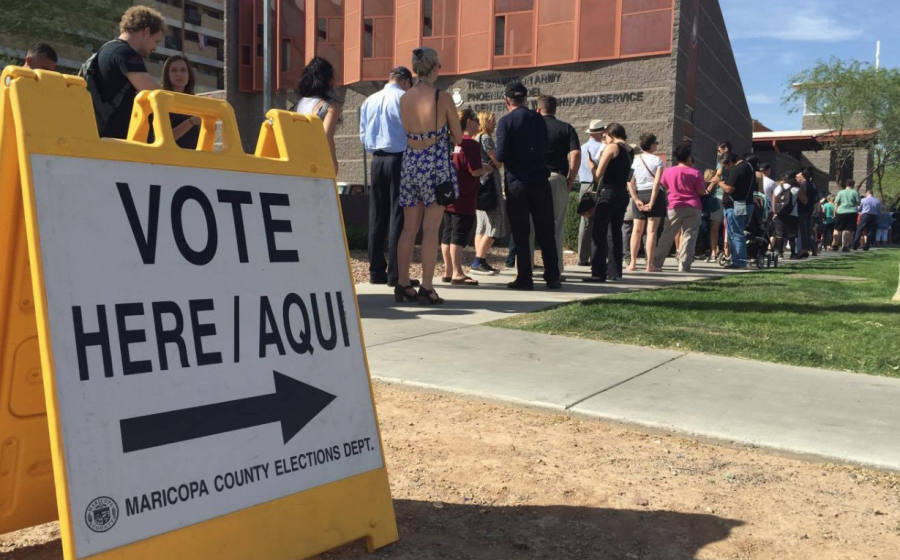Voter Suppression in Modern-Day America – What Does This Mean for our Future?
November 2, 2020
Voter suppression in America has been a contentious subject since the days of the Civil War, with the topic resurfacing now more than ever as the country moves closer to the 2020 presidential election. As the users of social media sites like Twitter and Facebook continue to interweave themselves in American politics, voter suppression and other such forms of electoral interference are now easier than ever to engage in. In this article, I want to detail what voter suppression is, how it affects politics today, and what can be done to change it.
History
Voter suppression is generally defined as a political strategy used to prevent a certain demographic of voters from registering to vote or voting, and often targets poor and non-white communities. It encompasses a wealth of different tactics, such as gerrymandering, voter ID laws, voter intimidation tactics, and other such forms of discouraging (and sometimes outright denying) a person’s right to vote.
Voter suppression is very much tied to race and class, and has disproportionately affected people of color since its beginning. After the Civil War when America established the 15th Amendment, which gave all men the right to vote regardless of “race, color, or previous condition of servitude,” Black voters have been targeted by countless different laws, policies, and tactics in order to prevent them from exercising their right to a position in our electoral process.
Many confederate states administered literacy tests and poll taxes, which were specifically designed to target low income people of color and prevent them from voting. At this time, gerrymandering, the practice of redrawing electoral districts to gain an electoral advantage for a political party, also became a standard practice. This led to Black voters consistently making up less than 10% of voter turnout for most of the early 20th century.
The Voting Rights Act of 1965 was designed to help counter the spread of these practices by outlawing the usage of literacy tests, giving the federal government control over voter registration in areas where minority turnout was low, and paving the way for poll taxes to be outlawed in 1966. While the act was often ignored in southern states, it did give Black voters a metaphorical leg to stand on in court, if they were to challenge any instances of voter suppression being carried out by their local elected officials. By 1969, voter turnout for Black people had increased from 6% to 59% in the span of just four years.
Voter Suppression Today
Although today’s political climate has improved in reference to voter suppression, new tactics are being utilized by politicians in order to prevent low income and POC communities from voting. Voter ID laws, which require a person to show some form of identification in order to vote or receive a ballot for an election, have been accused of being a form of voter suppression. A recent study conducted by New York University’s Brennan Center for Justice suggested over three million citizens do not have a government issued picture ID. These often include young people, low income people, the elderly, immigrants, and people of color, all of whom are already being targeted by different types of voter suppression.
Social media sites like Twitter and Facebook also have a hand in these tactics, as digital voter suppression is becoming more prevalent. Today, misleading information about voting procedures can be spread at the click of a button, and propaganda is easier to spread than ever. Advertisements and posts encouraging people not to vote had been spreading like wildfire online throughout the 2016 election, and in 2020, the same thing seems to be happening.
Voter suppression has taken a new form during 2020 as well, as we are in the midst of the COVID-19 pandemic. Many Republicans, including President Donald Trump, have retracted support for absentee ballots and mail-in voting, stating that it is an invitation for voter fraud(I heard somewhere that we’ve been doing mail-in voting since the Civil War…. The idea that absentee ballots would set the stage for instances of electoral manipulation (and to the extent that it could even impact the results of the election itself) is not supported by any evidence whatsoever, and at a time in which hundreds of thousands of Americans are losing their lives to this outbreak, it only marks yet another form of blatant anti-electoralism to suggest that people be prohibited from a valid form of participation in the electoral process.
Preventing Voter Suppression
Countering voter suppression can be a difficult task, especially for the average citizen. However, it is still possible to make a difference. Speak to your local community members to ask them if they plan to vote, and see if they have reported instances of civil rights violations by virtue of voter suppression. If you believe you have been a victim of voter discrimination, or you may be suspicious of anti-electoral practices being conducted near you, speak to a Civil Rights lawyer in your area.
Voter suppression and its various tactics are incredibly prevalent, and its impacts are almost immeasurable today. They predominantly effect people of color and low income communities, and display blatantly our government’s systematic racism and classism. And as massive social media corporations continue to interlock themselves in American elections, electoral misinformation and propaganda are easier than ever to engage in. However, there still remains ways to counter these measures, and retain our rights to a fair and democratic election process.


















